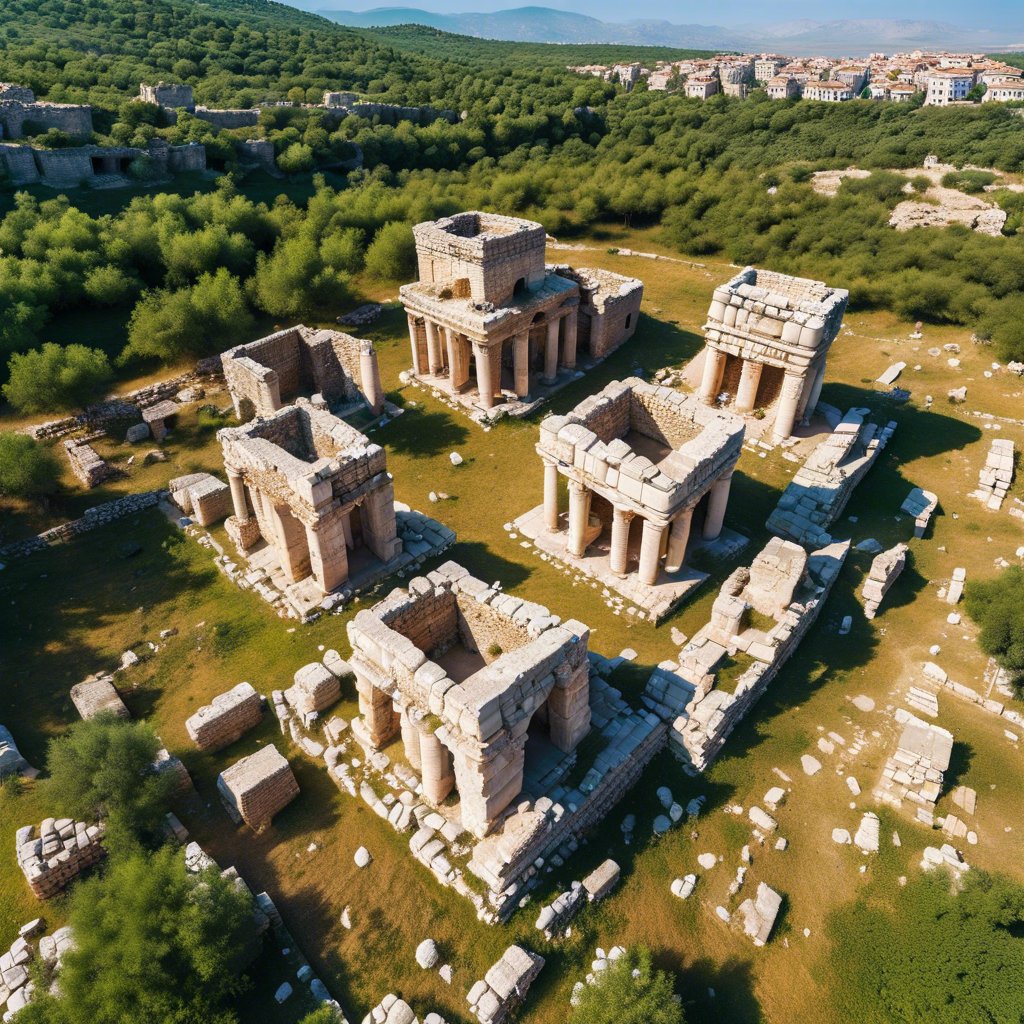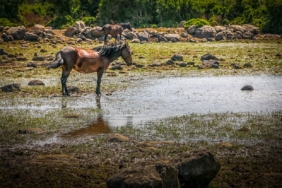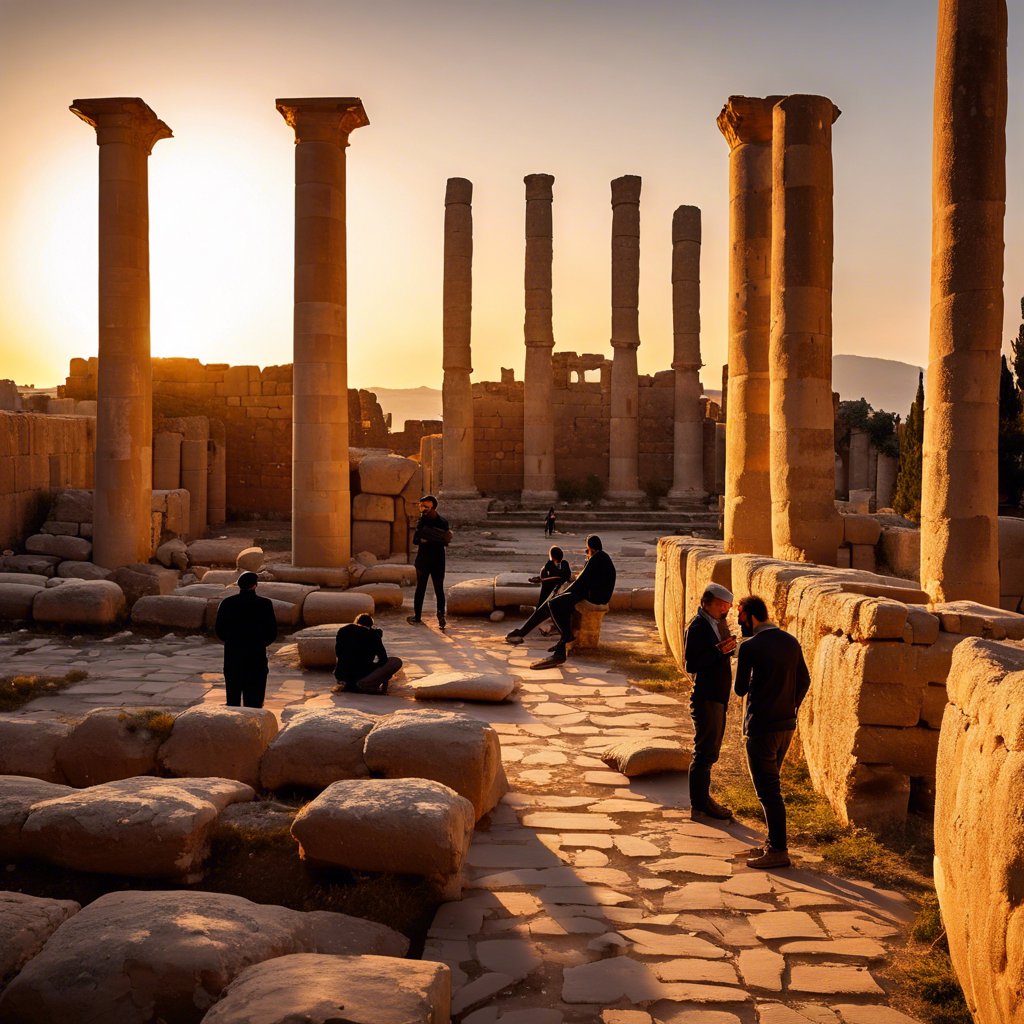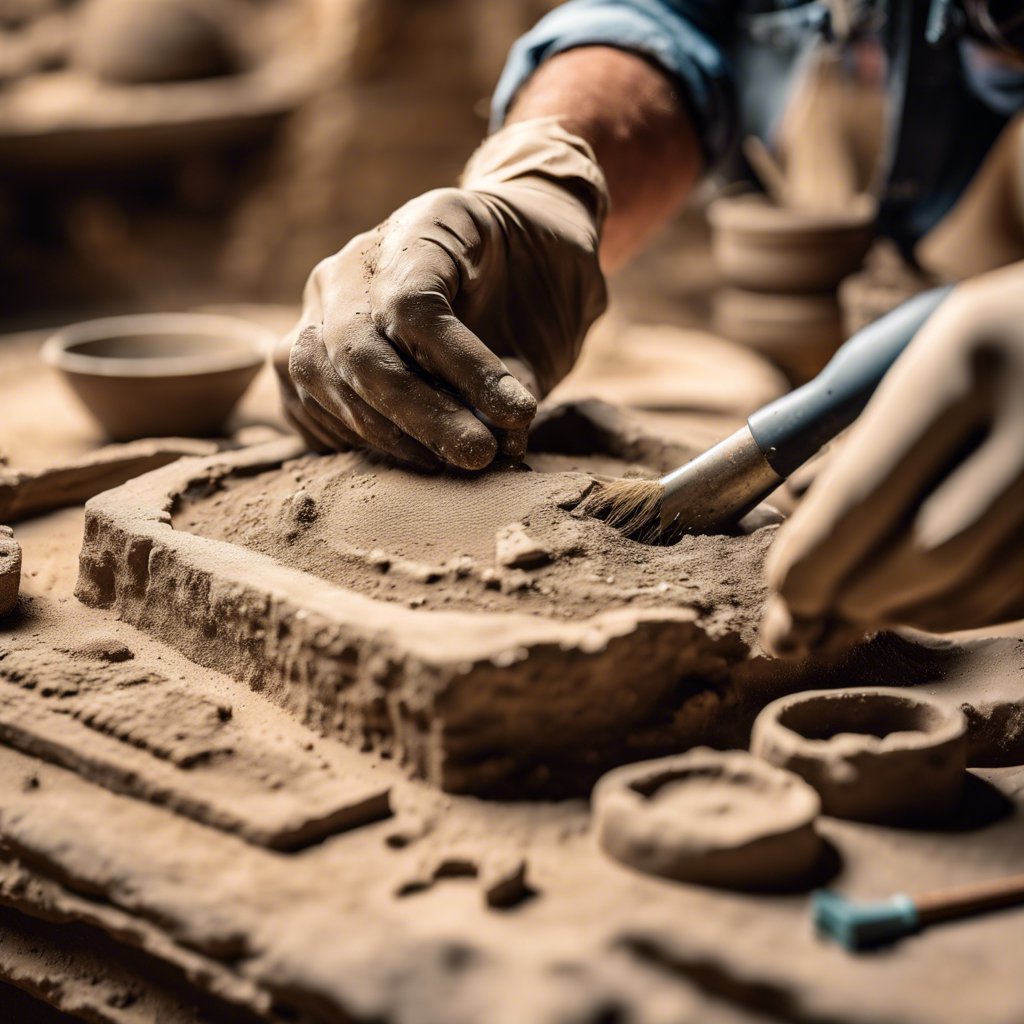Legacy to the Future: Kissebükü Ancient City Project
A promotional launch was held at the Kissebükü excavation site within the framework of the ‘Legacy to the Future: Kissebükü Ancient City’ project. This important event was attended by Minister of Culture and Tourism Mehmet Nuri Ersoy, Muğla Governor İdris Akbıyık, Bodrum District Governor Mustafa Çit, Kissebükü Excavation Head Assoc. Prof. from Muğla Sıtkı Koçman University. Dr. Hatice Özyurt Özcan, various administrative heads and many representatives of non-governmental organizations attended. The program started with the promotional video of Kissebükü Ancient City. After Minister Ersoy’s speech, Ersoy and the protocol members visited the excavation site and received information about the work done. In addition, the scout group holidaying in the region presented Minister Ersoy with a scout tie and took a souvenir photo together.
Status of Excavations
Minister of Culture and Tourism Mehmet Nuri Ersoy stated that 16.2 percent of the excavations in the Kissebükü Ancient City have been completed. Ersoy said, “We hope that our Heritage to the Future Project will contribute to the cultural and tourism life of our country with the new pages opened in Turkish archeology and all the splendor of our ancient cities. Within the framework of this ambitious and important project , Ephesus and Bergama in Izmir, Hierapolis-Laodikiea in Denizli, and Aydın will be opened. We held launches in the ancient cities of Aphrodisias, Stratonikeia-Labraunda in Muğla, Aspendos-Myra-Andriake in Antalya, and the Old Van City Ruins in. Kissebükü, on the coast of Keramus and Halicarnassus, two important ancient cities of Coastal Caria. The history of the city extends from the Archaic period to the Late Antique period. This ancient city was used as a bishopric center during the Byzantine period. draws attention with its wall paintings and architectural structures dating back to the 6th century. This city was designed directly according to the Byzantine settlement system and was not built on an ancient city. The city has a unique topography with its valley surrounded by mountains, water resources and peaceful bay. Buildings are classified according to their functions and positioned in accordance with the geographical structure. In this context, the city is divided into five groups: acropolis, necropolis, religious center, western settlement and port area. The excavations started in 2019 and will be carried out by Assoc. Prof. from Muğla Sıtkı Koçman University as of 2021. Dr. It continues under the chairmanship of Hatice Özyurt Özcan. “16.2 percent of the ancient city has been excavated so far,” he said.
Expropriation Studies
Minister Ersoy also gave information about the expropriation works carried out in the area: “The expropriation decision was taken for the 32 thousand 700 square meter area located in the 1st Degree Archaeological Site in Kissebükü Ancient City, and the 17 thousand 100 square meter section where the religious buildings are located will be converted to 55.2 square meters in 2024.” In this way, the expropriation problem, which was the biggest obstacle to the work, was eliminated and we accelerated our work. The building group on the northern coast of Kissebükü Bay is a religious building containing ruins of a baptistery, a church, a bathhouse and many buildings with religious functions. We expropriated this 8-decare area and included it in the excavation area in 2023. We uncovered the structures under dense vegetation and made them ready for the 2024 excavation season. We identified many ruins of buildings connected to the north and northeast of the church and we are starting intensive excavations of the religious center. It is a four-leaf clover planned baptistery with an attractive structure and few examples in the region. A limited number of examples of the wall paintings of this building dating back to the 6th century have survived to the present day. We started our work within a program in which excavation and conservation will be carried out together throughout 2024. We will start the restoration of the building, whose excavation we plan to complete by the end of the year, in 2025. We are carrying out the Excavations of Ala Church, the largest church in the city, simultaneously with the baptistery. “We will start the excavation of Bath No. 2, located to the west of the baptistery, and the restoration of the Ala Church in 2025,” he said.
Conservation Studies and Future Goals
Minister Ersoy stated that they will complete the houses unearthed during the excavations and start conservation and restoration works by 2025: “The excavations of the monumental tombs and the project works of the structures located in the intersection of the necropolis area of the ancient city and the religious center have been completed. We will carry out restoration works within the scope of the projects. In addition to a port and the structures connected to this port, there is a monumental harbor church, a grave. chapel and courtyard residences on the hillside. Our planned works in this area are as follows: We will start the restoration and conservation works in the Harbor Church, whose excavations were completed in 2022. “We are also planning the restoration of the narthex mosaics, which are currently closed against destruction.”
Minister Ersoy said, “We completed the excavation and conservation of the grave chapel in the west of the church in 2022. We partially restored the wall paintings of the building dating back to the 6th century; we will continue the conservation work of the unfinished sections “Within the scope of our project, we revealed the residences located in the north of the Harbor Church. We carried out the excavations of these residences.” We will complete and start the conservation and restoration works in 2025. The buildings in the region, designed as a social living space in the west of the city, have different functions and are lined up from the coast to the slopes perpendicular to the sea. The excavations and conservations of the buildings on the coastline were largely completed between 2019 and 2023. “The first structures of the section are the circular tower, two-storey rooms and cisterns at the southern end of the slope. We planned to start the excavations in this area primarily around the ancient tower in 2025. The excavations were completed in the first phase of the settlement, which covers an area of 1000 square meters, extending from the slopes to the coast in the west of the city, “he said.
future vision
Stating that they plan to complete 80 percent of the excavation and restoration work in Kissebükü at the end of 4 years, Minister Ersoy said, “Within the scope of the Heritage to the Future Project, we have started preliminary preparations for the conservation of the excavated places in 2024. Located on the west coast, it is a two-storey commercial building consisting of several sections. The excavation of the building complex was completed between 2023 and 2024. We are starting the restoration and conservation works of this complex, which is. thought to be used as a residence-restaurant in the Bath No. Our excavations have started in the large building No. 1. We plan to start working on the acropolis, which is located on a hill in the north of the bay. and contains ruins from the early period of the city, as of 2025, with our Heritage to the Future Project to give the ancient city of Kissebükü the status of a ruin. We also aim to create a holistic landscaping work. visitor welcome center, walking paths, explanatory and guiding information boards, and gathering and information areas. As a result of the Heritage to the Future Project work, we will have largely revived Kissebükü. At the end of four years, we plan to complete the excavation and restoration work in 80 percent of the ancient city. “We will allocate a total of 800 million lira to achieve this goal,” he said.
















